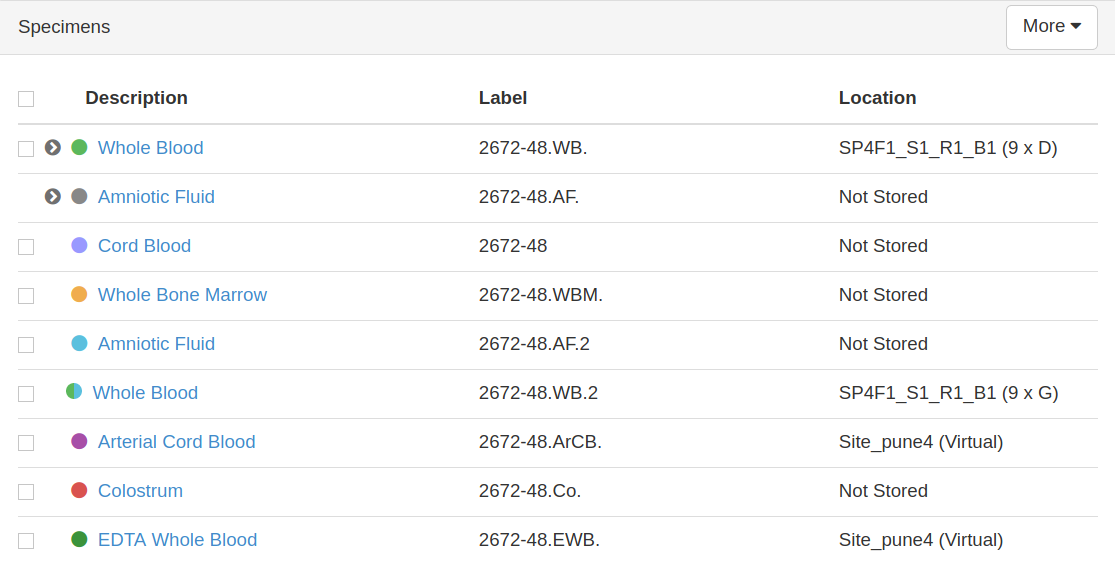Once the protocols are set up and participants and visits collected, the next obvious step is to collect the specimens. In OpenSpecimen, ‘specimen’ can indicate a primary specimen, it’s derivative or an aliquot for storage.
You can collect specimens and visualize them in a hierarchy. In OpenSpecimen, it is called ‘specimen tree’. This model helps to track the lineage of specimens and to collect QA data like freeze-thaw cycles, centrifugation details, etc., which helps in maintaining a record of high-quality specimens.
A color-coding scheme for specimens, allows you to quickly identify the status of a specimen as to whether it is collected, stored, distributed or discarded. For more details, refer to specimen color-coding.
Generic details like specimen type, anatomic location, quantity, etc, are captured in default data entry pages. But any additional annotations, like test results, can be captures using custom forms.
This page gives an overview and links to various collection scenarios and operations on the specimens.
Collecting Unplanned Specimens
Collections for general biobanking are usually unplanned, i.e, there are no specific time-points and specimens get collected whenever they are available. For such cases, the unplanned specimen collection workflow of OpenSpecimen is best suited.
For more details, refer to Unplanned specimen collection
Planned Specimen Collection
In the case of longitudinal collections, specific time-points for collection, specimen requirements and processing details are defined at the start of the study. For this, the planned collection workflow of OpenSpecimen allows you to define study calendars and define an SOP of the study.
For more details, refer to Planned specimen collection
Unplanned Derivatives/Aliquots
Depending on the needs or availability you may often have to create a child or grandchild of a sample without prior planning. For such cases, OpenSpecimen allows you to collect additional derivative or aliquot from a specimen’s overview page.
For more details, refer to collecting unplanned derivative/aliquot
Bulk Operation on Specimens
Often there is a need to perform a common operation on multiple specimens like distribution, deletion, transfer, etc. In such cases, OpenSpecimen allows you to select multiple specimens at once and perform a bulk action.
For more details, refer to Bulk operation on specimens
Scanning specimens from box scanners
In high-throughput labs, the use of scanners is quite common. OpenSpecimen allows collecting specimens in bulk using box scanners.
For more details, refer to Scanning specimens from box scanners
Bulk import specimen data
In the case of high-throughput biobanks, the data for thousands of specimens may need to be entered. For this, OpenSpecimen allows importing data in the form of CSV files.
For more details, refer to specimens CSV
Moving specimens from one visit to another
OpenSpecimen allows you to move the specimen from one visit to another to handle the situations like merging of multiple sub-studies, accidental collection of specimens under the wrong participant/visit, etc. This can be done across collection protocols, across participants or across the participant visits. For more details refer to Moving primary specimens from one visit to another.
Specimen color coding
OpenSpecimen displays the color code for specimens based on its status.
